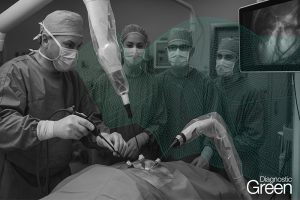Indocyanine green (ICG) is one of the only clinically approved near-infrared (NIR) fluorophores used during fluorescence-guided surgery (FGS), but it lacks tumor specificity for pancreatic ductal adenocarcinoma (PDAC). Several tumor-targeted fluorescent probes have been evaluated in PDAC patients, yet no uniformity or consensus exists among the surgical community on the current and future needs of FGS during PDAC surgery. In this first-published consensus report on FGS for PDAC, expert opinions were gathered on current use and future recommendations from surgeons’ perspectives. A Delphi survey was conducted among international FGS experts via Google Forms. Experts were asked to anonymously vote on 76 statements, with ≥70% agreement considered consensus and ≥80% participation/statement considered vote robustness. Consensus was reached for 61/76 statements. All statements were considered robust. All experts agreed that FGS is safe with few drawbacks during PDAC surgery, but that it should not yet be implemented routinely for tumor identification due to a lack of PDAC-specific NIR tracers and insufficient evidence proving FGS’s benefit over standard methods. However, aside from tumor imaging, surgeons suggest they would benefit from visualizing vasculature and surrounding anatomy with ICG during PDAC surgery. Future research could also benefit from identifying neuroendocrine tumors. More research focusing on standardization and combining tumor identification and vital-structure imaging would greatly improve FGS’s use during PDAC surgery.
Despite the potential of fluorescence imaging during pancreatic cancer surgery, more research is needed to facilitate the approval of tumor-targeted probes, standardize imaging techniques, and most importantly, gain trust from surgeons. Despite advancements in the development of novel probes, preclinical research settings do not always accurately represent the surgical setting.
This first-of-its-kind Delphi consensus survey highlights current experiences and attitudes towards fluorescence imaging during pancreatic cancer surgery, specifically from surgeon’s perspectives. The results from this consensus survey highlight potential new directions for future research, which could facilitate the standardized use of fluorescence imaging during pancreatic surgery.




